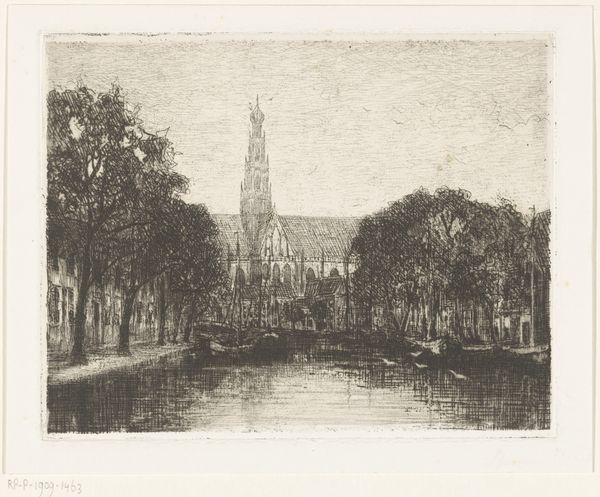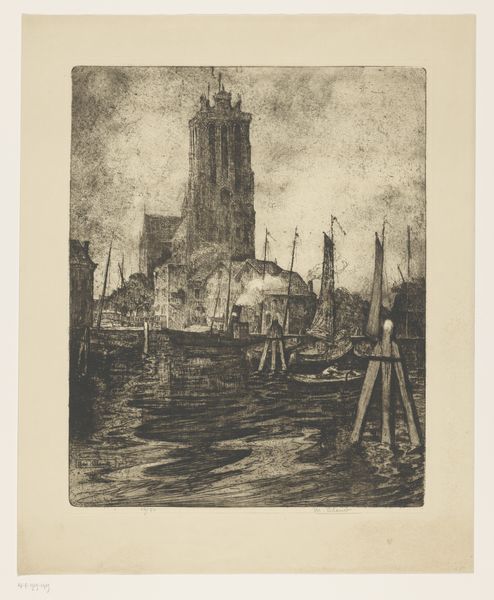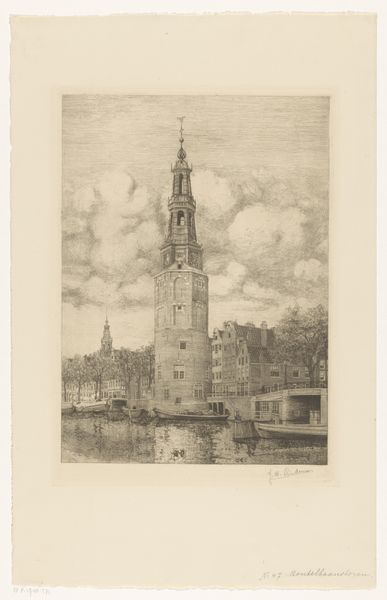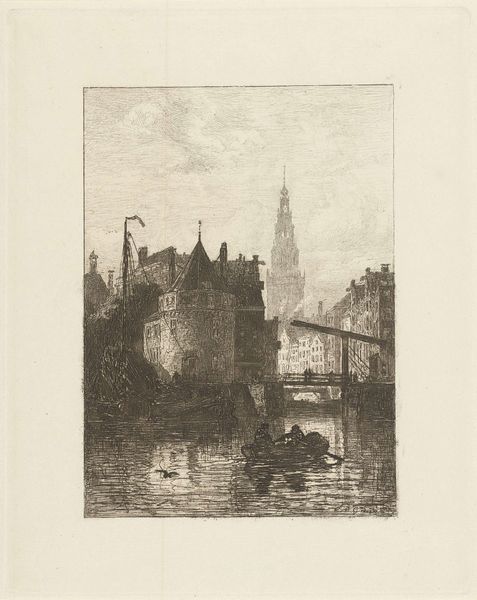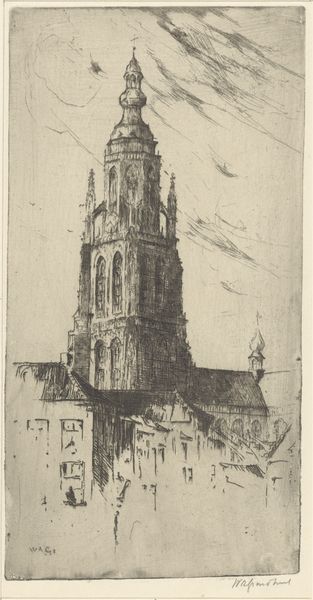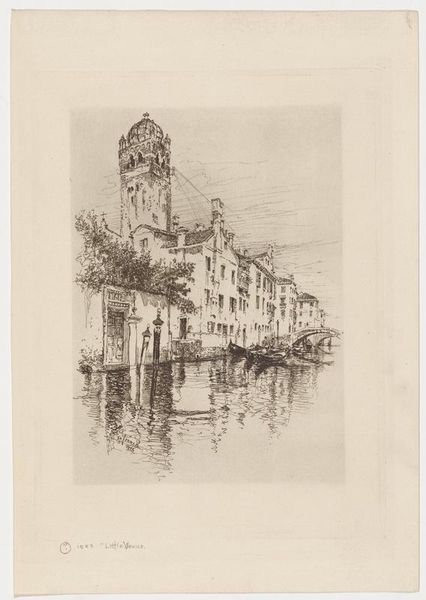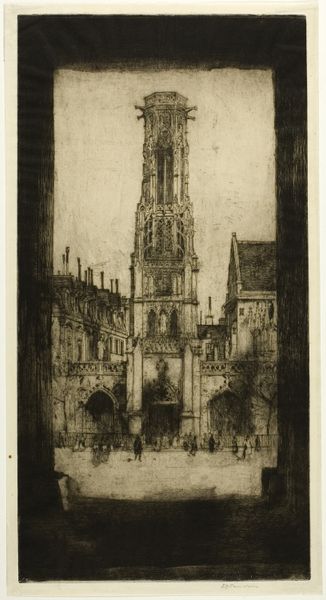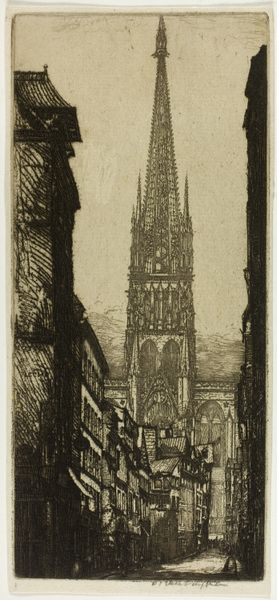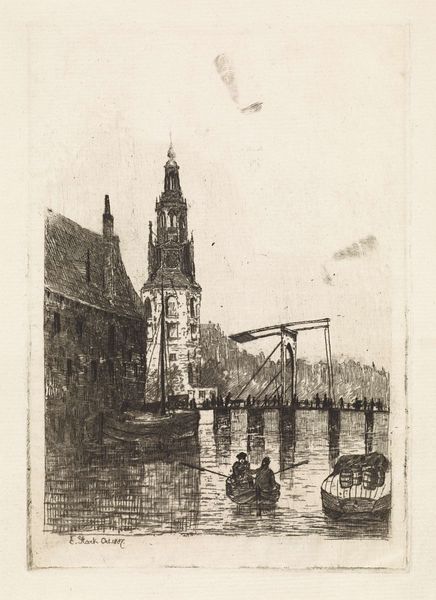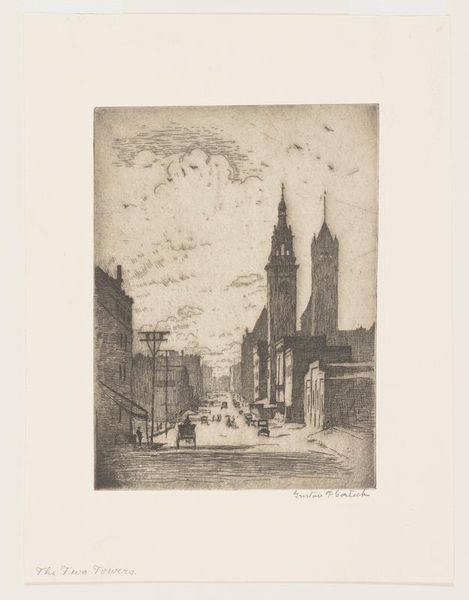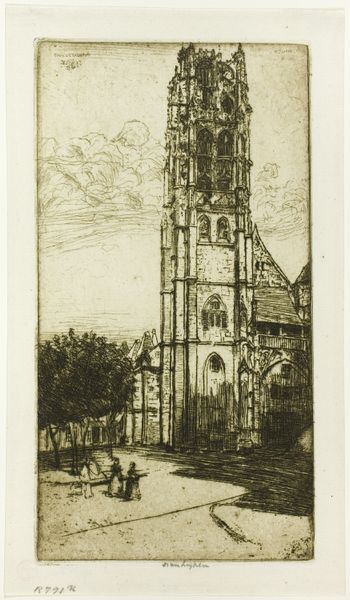
drawing, print, etching
#
drawing
# print
#
etching
#
landscape
#
pencil drawing
#
geometric
#
cityscape
#
realism
Dimensions: plate: 35.88 x 27.94 cm (14 1/8 x 11 in.) sheet: 43.5 x 31.75 cm (17 1/8 x 12 1/2 in.)
Copyright: National Gallery of Art: CC0 1.0
Editor: Let’s take a look at Kerr Eby’s etching, "Boston Stump," from 1925. It depicts a large cathedral or church looming over what appears to be a modest cityscape bordering a river. It feels… monolithic, almost like a symbol of power, juxtaposed with the mundane buildings around it. What are your initial thoughts? Curator: The “Boston Stump,” officially known as St. Botolph’s Church in Boston, Lincolnshire, was and still is a landmark, but seeing it framed this way invites reflection on the Church’s place in the local, perhaps even national, identity. How does Eby choose to portray this relationship between power, place, and everyday life? Note how Eby positions the church not just as a dominant architectural feature, but as integrated with the waterfront community. Editor: Integrated, but still separate, wouldn't you say? There's a clear visual distinction in scale and grandeur. Does this maybe speak to the historical influence and the physical dominance of the Church in the lives of ordinary people during that period? Curator: Precisely. Eby made this print at a time when the role of the church was being renegotiated in society. Etchings like these found their way into homes, serving as accessible reflections on these themes, engaging the public in conversations about religion, society, and the changing landscape. It makes me wonder about Eby’s motivations in creating this piece during the interwar period. Was he questioning or celebrating the enduring presence of the Church? Editor: It's fascinating to consider how the act of reproducing and distributing an image transforms a monument into a cultural touchstone for debate and reflection. Curator: Indeed. Art becomes a tool for navigating social change. This exercise has made me think more deeply about the interplay between art, architecture, and societal values during the early 20th century.
Comments
No comments
Be the first to comment and join the conversation on the ultimate creative platform.

